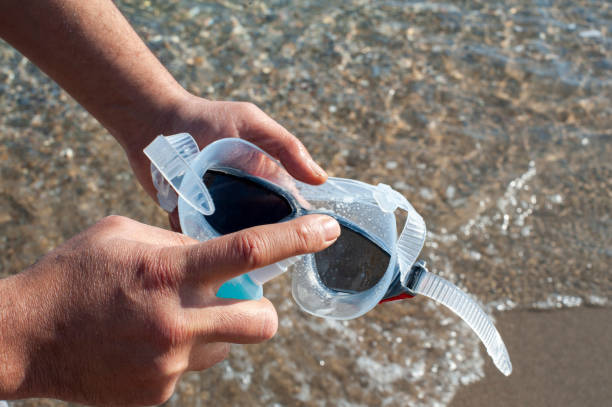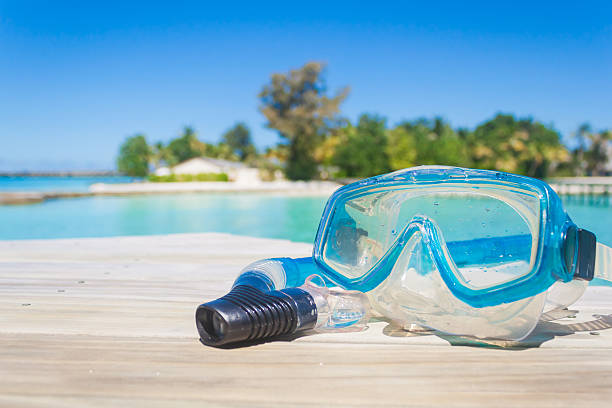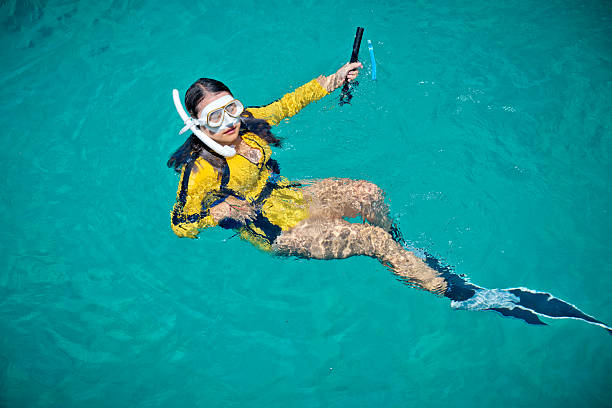As a swimming equipment manufacturer, we understand the importance of safety in every product. Full-face snorkel masks have gained massive popularity among recreational snorkelers due to their comfort and panoramic view. But behind their sleek design lie hidden dangers that many casual users overlook. This article uncovers the four major risks associated with full-face snorkel masks and helps you decide whether they are the right choice for your next ocean adventure.
Why Are Full Face Snorkel Masks Dangerous? The 4 Main Risks
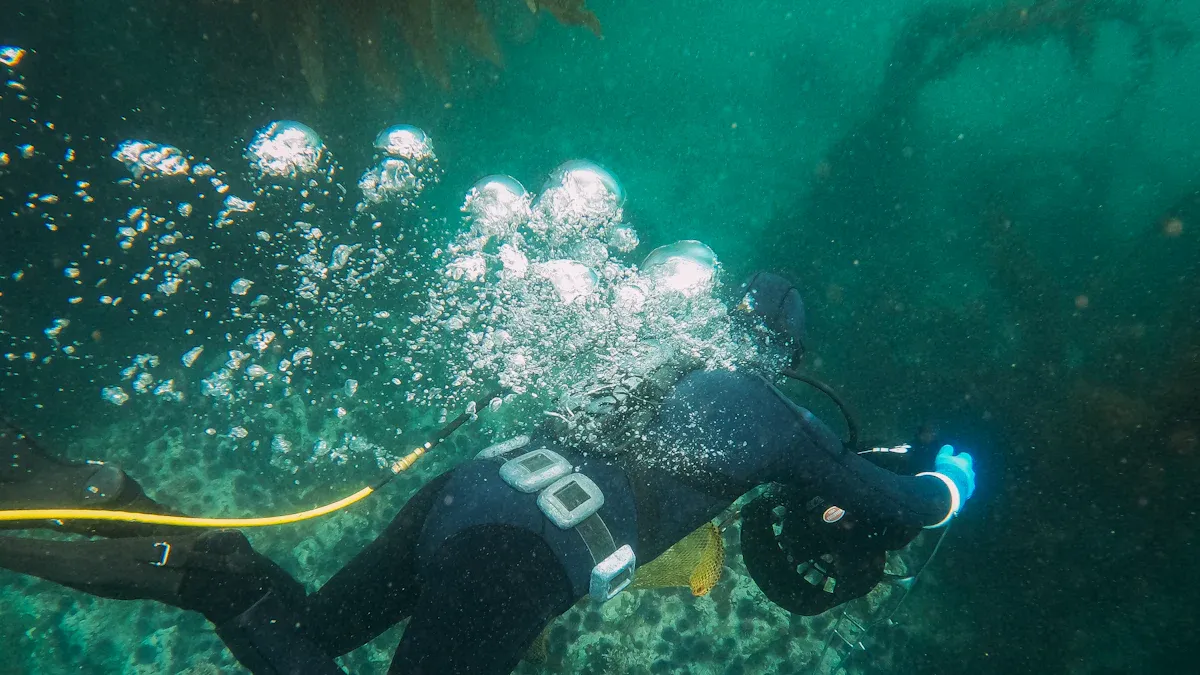
Although full-face snorkel masks are convenient, they also come with serious design flaws that could pose a danger, especially for beginners and untrained users. Let’s dive into the four primary risks:
CO2 Buildup and Hypercapnia
One of the most alarming issues is the risk of carbon dioxide (CO2) buildup inside the mask. Unlike traditional snorkels, full-face masks have a more complex airflow system. If this system is poorly designed or the mask doesn’t fit perfectly, the exhaled CO2 can accumulate inside the mask rather than being expelled properly.
This leads to hypercapnia, a condition where too much CO2 is retained in the body, causing dizziness, nausea, headaches, confusion, and in severe cases, unconsciousness. In the water, even mild symptoms can quickly become life-threatening.
Cheaper masks or knock-offs with inadequate valve systems are especially vulnerable to this issue, making brand and design crucial considerations.
Shallow Breathing and Hypoxia
Full-face snorkel masks can make users feel like they’re breathing normally, but they often promote shallow breathing, particularly among new snorkelers. Because of the enclosed chamber, people may not fully exhale, leading to low oxygen levels (hypoxia) over time.
Hypoxia symptoms include shortness of breath, fatigue, disorientation, and blackouts — all extremely dangerous when snorkeling in open water. The false sense of security created by the “easy-breath” design can mask the onset of these symptoms until it’s too late.
Difficult Emergency Removal
In emergencies, the ability to quickly remove your mask is vital. Traditional masks and snorkels are simple and can be yanked off in one swift motion. Full-face snorkel masks, however, cover the entire face and often require both hands and multiple steps to remove, especially when wet or under stress.
In situations where a snorkeler panics or inhales water, this complexity could delay mask removal and escalate the risk of drowning.
Water Leakage and Clearing Challenges
Water leaking into a traditional mask can be easily cleared by exhaling or briefly lifting the mask. With full-face snorkel masks, leakage becomes much more problematic due to the larger internal volume and sealed facial chamber.
Once water enters, it’s not just about discomfort — it disrupts airflow and can increase CO2 buildup. Clearing the water is also harder since the user cannot easily expel it through the mouthpiece or nose without fully removing the mask, again highlighting the risk during emergencies.
Real Incidents Linked to Full Face Snorkel Masks
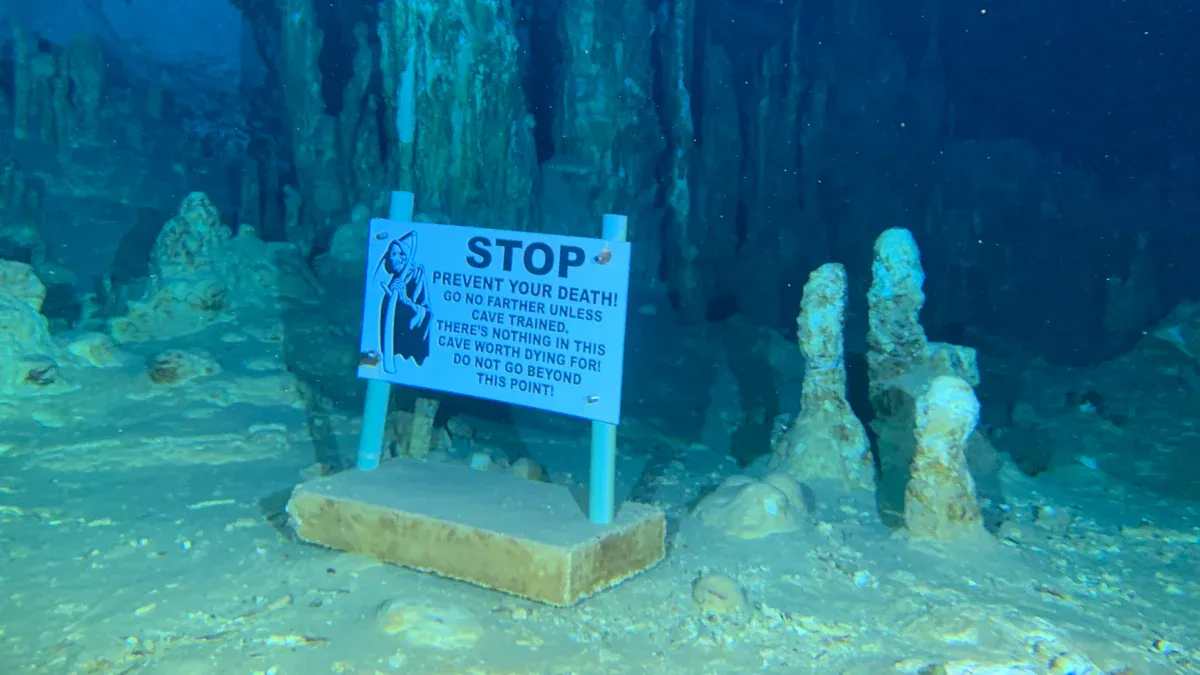
Reports from tourist destinations such as Hawaii and Thailand have raised serious concerns about full-face snorkel masks. In 2018, Hawaiian authorities investigated a spike in snorkeling-related deaths, with full-face masks being a common factor in several incidents.
Some victims experienced symptoms of hypercapnia or blacked out while snorkeling in calm waters — an indicator of internal breathing issues rather than external hazards. While not all deaths were directly attributed to the full face mask, the pattern was concerning enough to prompt some rental shops to ban full-face masks altogether.
Additionally, several lawsuits and recalls have surfaced due to cheaply made masks flooding the market without adequate testing or certification. These cases underscore the importance of both design integrity and responsible use.
Are All Full Face Masks Equally Dangerous?
Not necessarily. It’s important to distinguish between high-quality, certified full-face snorkel masks and generic or imitation versions.
Top-tier brands often integrate features such as:
- Dual airflow systems for separate inhalation and exhalation
- CO2 testing certifications
- Dry-top snorkels and purge valves
- Medical-grade silicone for secure seals
However, even the best-designed mask still poses inherent risks compared to traditional snorkel sets. These products were initially intended for relaxed surface snorkeling, not for deep dives, aggressive swimming, or ocean currents.
Before buying or recommending one, ask these critical questions:
- Is the mask certified by any safety or respiratory testing body?
- Are the valves functioning properly after multiple uses?
- Does the brand disclose CO2 buildup tests?
Traditional Snorkel Sets: A Safer and Smarter Choice
For decades, traditional two-piece معدات الغطس — a separate mask and snorkel — has been the go-to choice for both beginners and professionals. Here’s why:
- Better breath control: The open system promotes full exhalation and fresh air intake.
- Easier clearing: Water in the snorkel or mask can be quickly expelled.
- Faster removal: In emergencies, both pieces can be taken off within seconds.
- Modular flexibility: You can upgrade parts individually for fit and performance.
Traditional sets may lack the stylish look or convenience of full-face masks, but when it comes to functionality and safety, they are the more reliable choice.
Read more: Full Face Snorkel Mask vs Regular Snorkel Mask: Which Is Best for Snorkeling
Expert Tips to Stay Safe While Snorkeling in the Ocean
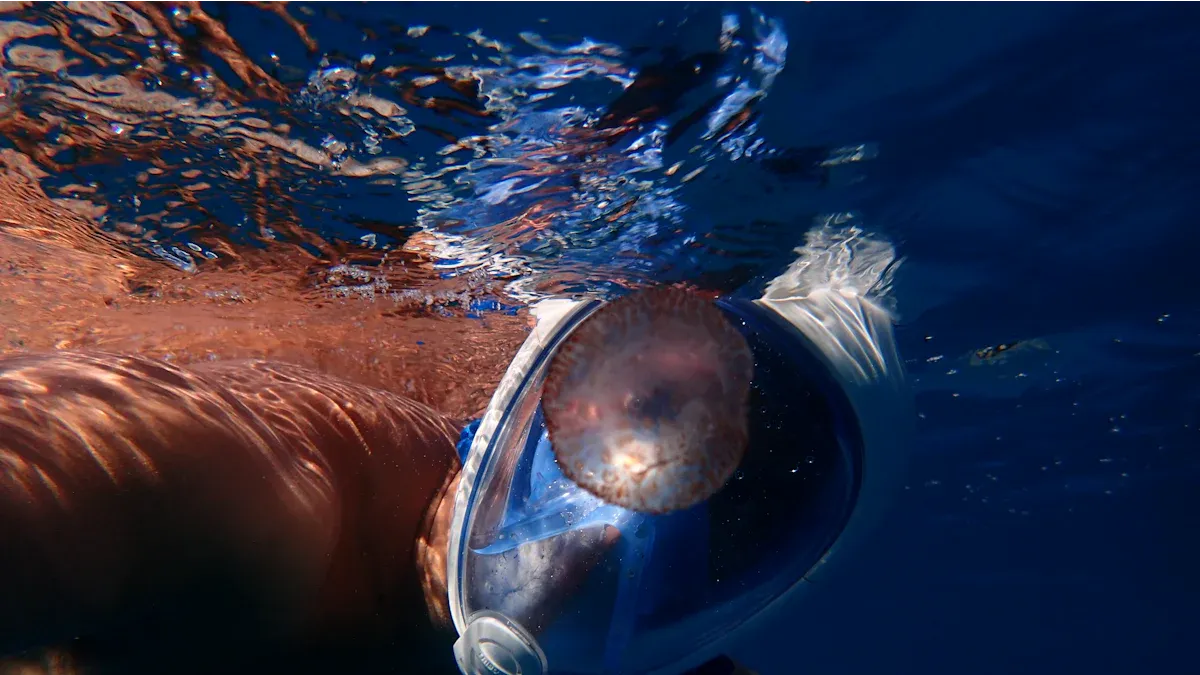
Whether you’re using a full-face mask or traditional gear, safety always starts with preparation. Here are some expert tips to reduce risks:
- Test your equipment beforehand: Always try your gear in a controlled environment like a pool. Ensure there’s no leakage and that breathing feels natural.
- Never snorkel alone: Always have a buddy nearby — they can help in case of panic, cramps, or unconsciousness.
- Understand your limits: Don’t overexert yourself, especially if you’re new to snorkeling. Avoid strong currents and stay within sight of shore or boat.
- Buy from trusted manufacturers: Quality matters. Choose diving gear from brands with transparent safety testing and user reviews.
- Check conditions before entering the water: Weather, tides, and waves can all affect snorkeling safety. Be sure to consult local guides or lifeguards.
- Listen to your body: If you feel dizzy, tired, or short of breath, stop snorkeling immediately and exit the water.
- Maintain your gear regularly: Saltwater and sun exposure can degrade valves, silicone, and lenses. Clean your mask thoroughly after each use.
Final Thoughts: Can You Use a Full Face Snorkel Mask?
Full-face snorkel masks aren’t inherently evil — they do offer comfort, wide vision, and dry breathing, especially for casual surface snorkeling in calm waters. But the risks associated with their design, especially regarding CO2 retention and emergency response, make them a less-than-ideal choice for serious snorkeling enthusiasts or ocean swimmers.
As a professional swimming equipment manufacturer, we recommend using traditional snorkel sets for better control, adaptability, and safety. If you do choose a full-face mask, invest in a premium model and educate yourself thoroughly before venturing into the ocean.
Safety should never be compromised for style or convenience — and understanding the real risks is the first step toward an enjoyable snorkeling experience.
Looking for professional-grade snorkeling gear?
We offer a wide range of tested, durable, and performance-optimized snorkeling equipment designed for both recreational and professional use. Contact us to learn more about our product line or inquire about private label opportunities.
